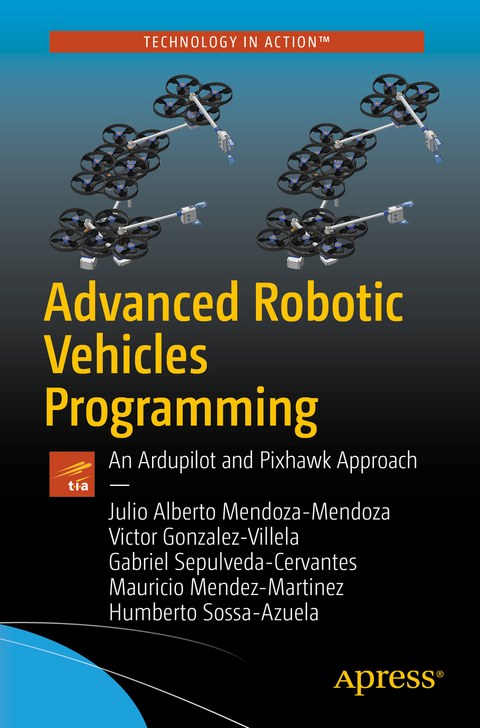
Advanced Robotic Vehicles Programming
Apress (Verlag)
978-1-4842-5530-8 (ISBN)
This book shows you how take your robotic programming skills to the next level. From hardware to software, Advanced Robotic Vehicles Programming links theory with practice in the development of unmanned vehicles. By the end of this book, you’ll learn the pixhawk software and ardupilot libraries to develop your own autonomous vehicles.
What You'll Learn
Model and implement elementary controls in any unmanned vehicle
Select hardware and software components during the design process of an unmanned vehicle
Use other compatible hardware and software development packages
Understand popular scientific and technical nomenclature in the field
Identify relevant complexities and processes for the operation of an unmanned vehicle
Who This Book Is For
Undergraduate and graduate students, researchers, makers, hobbyists, and those who want to go beyond basic programming of an Arduino for any kind of robotic vehicle.
Julio Mendoza-Mendoza earned his computing doctoral degree at CIC IPN in 2016, where he specialized in underactuated robotics, UAS, and intelligent and nonlinear control. He also earned his advanced-technologies master degree and mechatronics-engineering bachelor at UPIITA IPN, in 2011 and 2008 respectively. Currently, Julio is working on 5 patents related to his research field and developing his flying serial-robot manipulator theory at FI UNAM through his postdoctoral 2017 DGAPA grant. V. J. Gonzalez-Villela received his B.Eng. degree in Mechanical and Electrical Engineering and the M.Eng. degree in Electrical Engineering in 1987 and 1993, respectively, from the National Autonomous University of Mexico (UNAM), and a Ph.D. degree in Kinematics, Dynamics, and Nonlinear Systems applied to Mobile Robot Modelling and Control from Loughborough University, Loughborough, UK, in 2006. He is currently a Titular Professor in the Department of Mechatronics Engineering, UNAM. His research focuses on Mobile, Hybrid and Adaptive Robots, and Artificial Intuition.
Part 1: Introduction.- Chapter 1: Hardware and Software Description.- Chapter 2: Ardupilot Working Environment.- Chapter 3: Recap and Definitions.- Part 2: Sequential Mode.- Chapter 4: Basic Input and Output Operations.- Chapter 5: Advanced Operations: Serial Communications, Data Storage, Motion Units and Basis of Time Management.- Chapter 6: Application to Quadcopter Drone Control with a Smooth Flight Mode: .- Part 3: Real Time Mode.- Chapter 7: Real Time Working Environment.- Chapter 8: Compendium of the Previous Chapters in Real Time Mode with Application Code.- Appendices.
| Erscheinungsdatum | 17.02.2020 |
|---|---|
| Zusatzinfo | 138 Illustrations, color; 81 Illustrations, black and white; XXVIII, 439 p. 219 illus., 138 illus. in color. |
| Verlagsort | Berkley |
| Sprache | englisch |
| Maße | 155 x 235 mm |
| Themenwelt | Informatik ► Theorie / Studium ► Künstliche Intelligenz / Robotik |
| Informatik ► Weitere Themen ► Hardware | |
| ISBN-10 | 1-4842-5530-5 / 1484255305 |
| ISBN-13 | 978-1-4842-5530-8 / 9781484255308 |
| Zustand | Neuware |
| Informationen gemäß Produktsicherheitsverordnung (GPSR) | |
| Haben Sie eine Frage zum Produkt? |
aus dem Bereich


